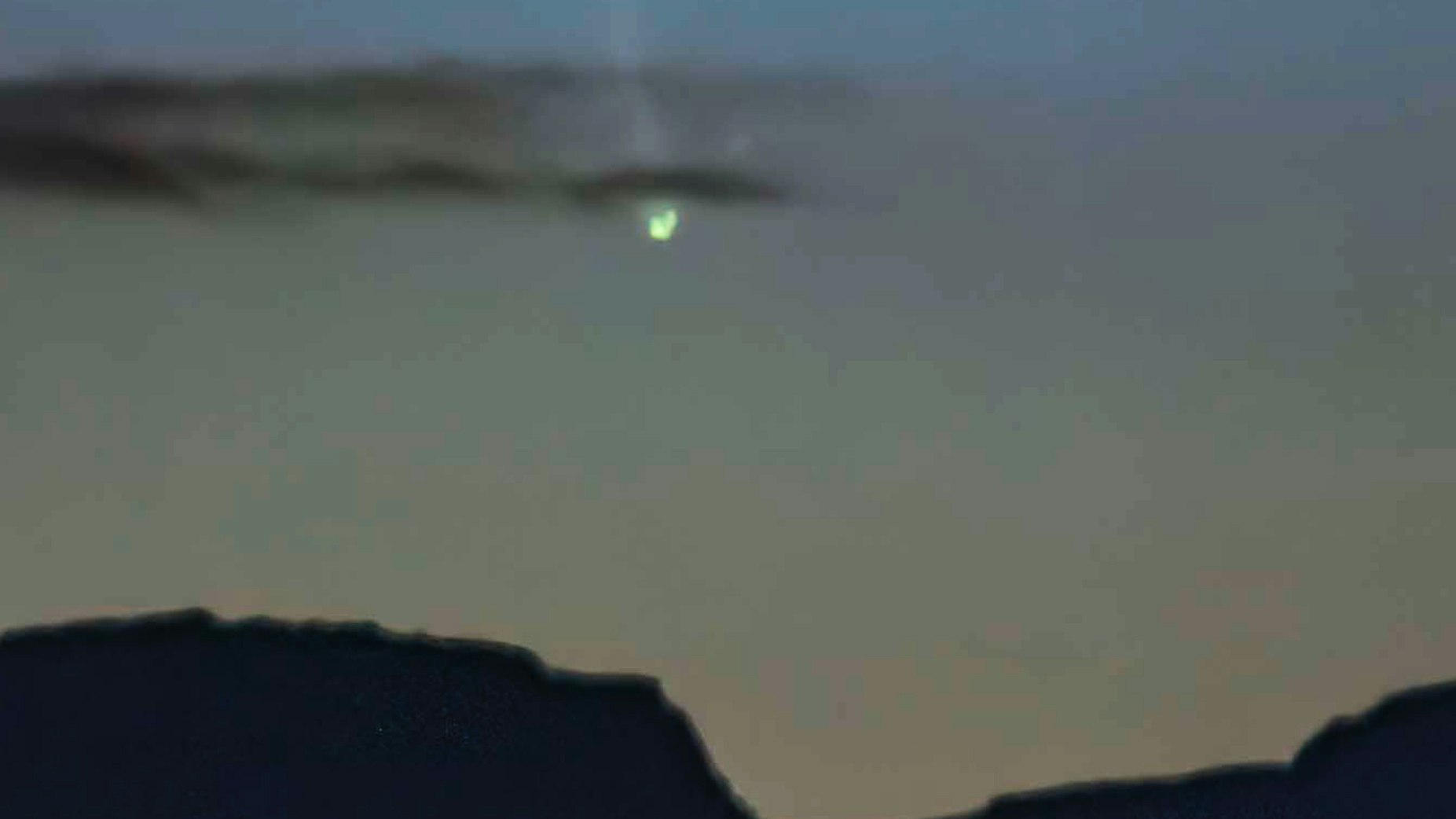Anyone can get a glimpse of green as the Nishimura comet streaks crosses the Wyoming sky, but it’s not easy.
Dave Bell, one of Wyoming’s preeminent photographers, was standing in his driveway at 5:30 a.m. Sunday morning right when the comet was supposed to be rising. Even then, he had to wait a bit before he saw the spectacular sight.
“It was about 44 (degrees), so I was outside in shorts and flip flops in my driveway shivering,” Bell told Cowboy State Daily. “I am pretty sure my neighbors are certain I have lost my mind, (but) It was worth it.”
“I patiently waited and took a couple of practice shots,” he added. “And, lo and behold, there it was. And once I identified where it was, I could see it with my naked eye.”
Bell was able to snap a few pictures with his camera that morning. But when he followed the same procedure Monday morning, Comet Nishimura was nowhere to be found.
There’s An App For That
Nishimura is currently visible in the eastern sky about an hour before sunrise. That’s the time Bell woke up and went outside to successfully (and unsuccessfully) see the comet.
Anyone should be able to see the comet without a camera or telescope once they can find one point of light out of the hundreds of others filling Wyoming’s dark skies. Any ambient light from sunrise or sunset will make it that much harder to find.
Bell believes a few minutes make all the difference. Luckily, he has a not-so-secret weapon to help: his phone.
There are several smartphone apps that can help aspiring stargazers find what they’re looking for. Bell has several apps downloaded to help, including Sky Tonight, Star Walk 2 and SpaceWeather.
These apps, all free to download with optional in-app purchases, can tell users where and when significant space events happen. They take a lot of frustrating ambiguity out of stargazing.
“I don’t know if an average person without (an app) or a good 400-millimeter lens would be able to really figure out where it's at,” he said.
Even then, spotting the long-period comet was a multi-night endeavor for Bell, even though he was looking in the right direction at the right time.
“It took some doing, and it took some planning,” he said.
Green Comet On The Clock
Starting Tuesday, Nishimura will be entering its brightest period since it will be at its closest to the Earth. Unfortunately, the comet also will be rising closer to sunrise every morning.
Bell believes trying to spot the comet in the morning will be “pretty much a waste of time” from this point onward. Luckily, even the comet clock is right twice a day.
The comet will also be visible in the western sky right after sunset after Tuesday. Peak brightness should be reached around Sept. 18.
No matter what time someone goes to look for the comet, there will be ambient sunlight competing with it.
After that, the comet will continue its long orbit around the sun. It won’t be visible from Earth for another 433 years, at least.
Despite the difficulties, Bell says trying to spot Nishimura is worthwhile. It looked exactly like it does in Bell’s pictures: a green dot being chased through the cosmos by a long tail.
“It’s pretty cool. What makes it interesting is that it’s so green,” he said. “They said it was a green comet, and it sure is.”
Andrew Rossi can be reached at arossi@cowboystatedaily.com.





